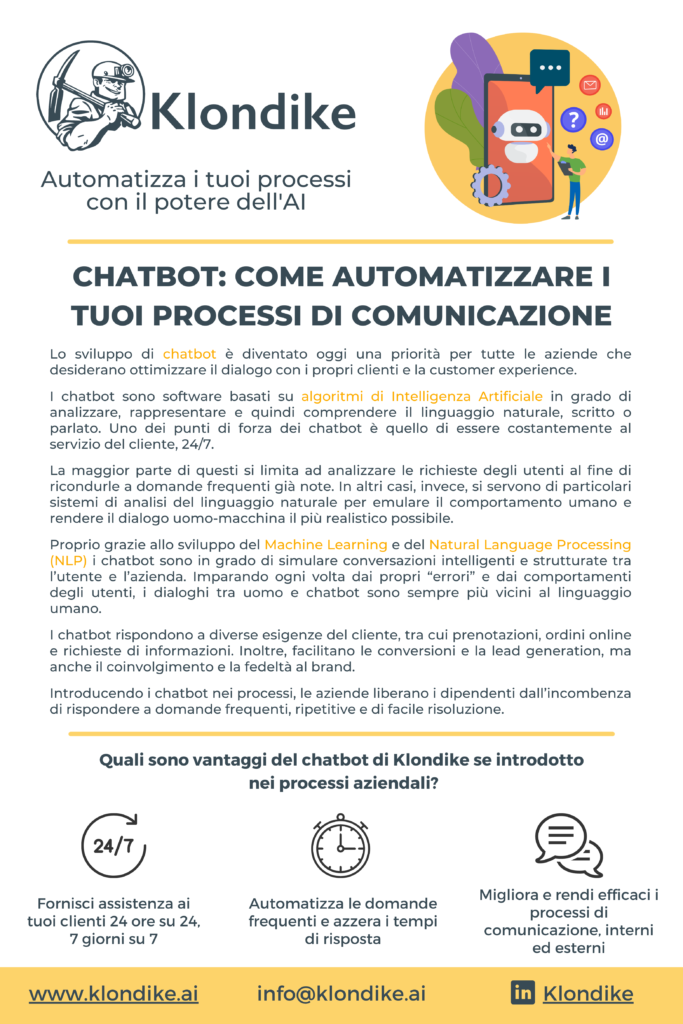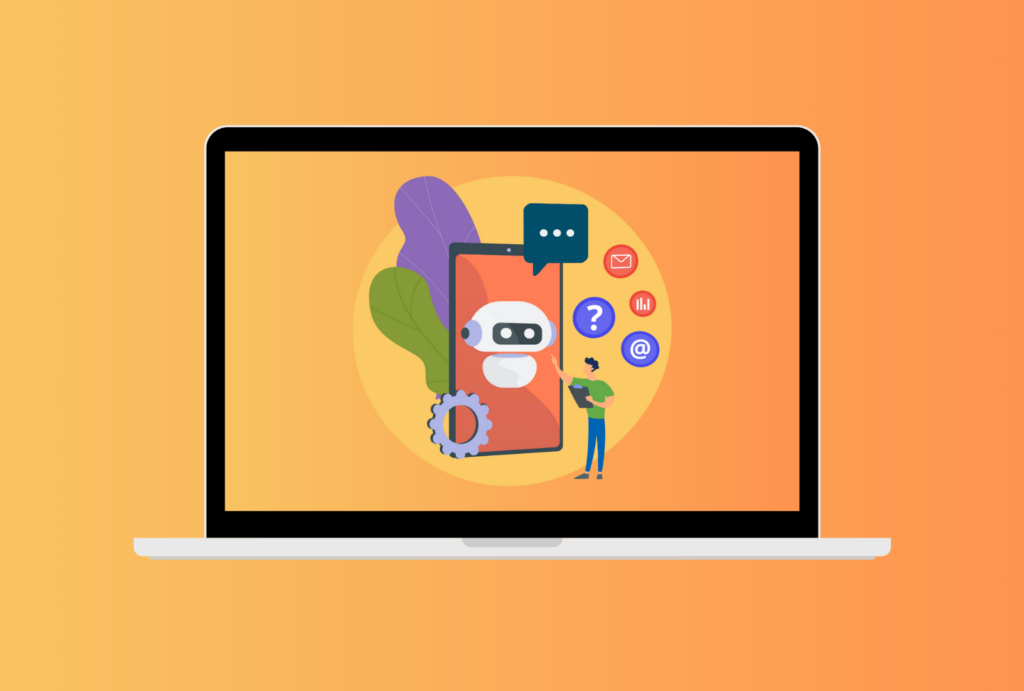The chatbot phenomenon
Technology is becoming increasingly important for the modernization and support of companies, especially as a result of the ongoing global pandemic. Our lives have changed, as has the way companies manage communication with their customers.
With the advent of Internet, along with the spread of chat and online messaging in recent years, we have been accustomed to receiving answers very quickly. This speed of response totally changes the perspective and the perception that the customer has towards the brand. This is why, among the various applications of Artificial Intelligence (AI), one of the most growing phenomena is the one of chatbots that are becoming increasingly popular within different business processes.
Man has always had the dream of creating a human-machine interaction that could simulate an illusory conversation between human beings in real time. The first was Alan Turing in the ’50s, who had hypothesized the possibility of programming a machine that could think and act like a human being, then going through ELIZA in the ’60s, the first chatterbot (or chatbot) and pioneering application of natural language processing. Since then, there have been many researchers all over the world who have faced this ambitious challenge.
Today, thanks to Artificial Intelligence, chatbot technology has evolved and improved allowing its application in different sectors. The road to an “equal” interaction between man and machine seems to become a reality.
What is a chatbot?
Chatbots, contraction of words chat and robot, are Artificial Intelligence solutions designed to simulate a human conversation.
Thanks to AI algorithms, these systems based on Natural Language Processing (NLP) can understand the meaning of human language (written or spoken), evaluate it and contextualize it to ensure a realistic dialogue.
Chatbots are definitely one of top trends of the moment. There is great interest around this phenomenon because today people make a huge use of messaging to communicate, and this trend is also changing the interaction between companies and customers. In this way, brands have the possibility to interact with customers (or potential ones) in a totally new way, communicating with them in a more direct, fast and personalized way.
One of the most interesting applications of chatbots is certainly the management of the relationship and communication between companies and customers, in the field of Customer Care and Customer Experience. The advantages given by the introduction of this technology in business processes (internal and external) are evident both for the customer, who is able to quickly get answers or solutions to what is sought, both for the company, which speeds up and improves the service offered by increasing the satisfaction of its users.
Chatbots can, however, have application in many areas such as travel and tourism, where they free the human element from simple actions such as offering assistance to customers in finding and booking flights and hotels, offering high-quality and accurate experiences. Another important case of use is that concerning the catering sector, especially at this time post pandemic where some trends such as food delivery are constantly growing: chatbots can facilitate reservations at the restaurant, for takeaway and delivery.
The strong points of Chatbots
Chatbots are a technology that can be used in different ways. One of the greatest strengths is that, compared to normal customer services or call centers, their availability is 24 hours a day, 7 days a week. Thanks to a chatbot customers can count on quick interactions and immediate responses, zeroing response times. The big revolution compared to the past is that today chatbots incorporate Machine Learning algorithms, so they learn from their “mistakes” and user behavior to provide an increasingly effective communication.
In addition to answering frequently asked questions, chatbots can help customers with problems or needs that may arise during conversation, suggest products or services, or, if necessary, direct customer requests to a human representative.
The benefits are not just for customers. In fact, thanks to chatbots, companies can automate simple and repetitive internal business processes. They do not replace employees, but they can be good assistants by carrying out, and perhaps resolving, the simplest requests, leaving to employees the most complex ones that need human intervention.
Chatbots can also monitor and collect data on customer habits, such as their involvement on the website, user satisfaction, or purchasing preferences. All information is extremely valuable for making the right decisions, allowing companies to improve their image and reputation.
Investing in chatbots is a way to keep up with the times. Trends estimate that the global chatbot market size will reach 2.5 billion dollars by 2028.
With Klondike chatbot you can automate your business processes (internal and external) without resorting to technical or development skills. To find out all the benefits of this technology, download the information sheet and request a DEMO.
Fill out the form and download now the detailed pdf dedicated to this business case








